Table of Contents
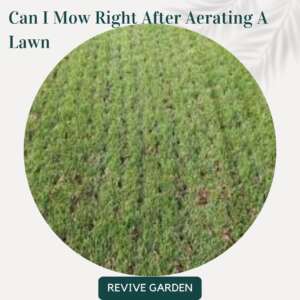 Everyone wants a beautiful, healthy lawn without having to devote much time and effort to maintain it. Aeration and other fundamental lawn care procedures make this ideal a reality.
Everyone wants a beautiful, healthy lawn without having to devote much time and effort to maintain it. Aeration and other fundamental lawn care procedures make this ideal a reality.
Lawns get the benefit from aeration because it opens up the soil so grassroots may more easily take in oxygen, water, and other nutrients. To get the most pleasing results from aerating your lawn, you’ll need to know how to take care of it afterward. Lawns are often aerated, and people wonder if they can be mowed again.
This article will guide you on when and how to aerate your yard to get the best results.
So, let’s start.
What Is Aeration?
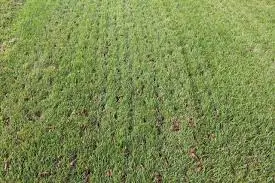
Aeration is a method of reducing soil compaction. This allows the grass to spread as it should and strengthen its roots. This is especially helpful for rhizome grass. For lawn health improvement, you can aerate it by punching holes in the soil. If you want the healthiest and most aesthetically pleasing lawn, in my opinion, renting an aerator for a day is the best investment you can make.
Inadequate aeration causes lawns to become highly compacted. If your property’s soil is rugged and compact, it will deprive your grass of oxygen, water, and nutrients.
Benefits of Lawn Aeration
For a healthy lawn, aeration is crucial. Aerating the yard regularly helps the grass to take root and spread by reducing soil compaction. Aeration improves the efficiency with which water reaches the grass’s roots. Furthermore, this facilitates the transport of oxygen and other vital nutrients to the plant’s roots.
Thatch is helpful as a cushion for the lawn, but it shouldn’t be more than half an inch thick. A thick layer of thatch may hamper roots of fresh grass if they try to grow into the soil. The grass can become unhealthier and finally dull in appearance if this continues. Pests and illnesses could potentially find a foothold in the grass.
When Lawn Needs Aeration?
If your lawn requires aeration, you may notice any of the following conditions:
- You should begin aerating your soil if you find that it is incredibly compact.
- Standing water on the grass and puddles on the lawn are signs of compacted soil. As a result, water has a hard time getting to the roots.
- Areas of wear and tear: a lawn with more bald spots and other signs of wear and tear than typical may need aeration. After extensive use, it’s natural for there to be patches or worn places.
- Seeing more brown or yellow areas in the grass than usual is a telltale indicator that it needs aerating. The grass will always change color if it isn’t getting enough water; therefore, this only works in wet conditions.
- For the compacting test, you can use a pencil or a screwdriver to see how tightly packed the soil is. If you have no trouble fitting it in, it should work. Compacted soil is likely the cause of your difficulties.
Types Of Aerators
Central Air Aerators
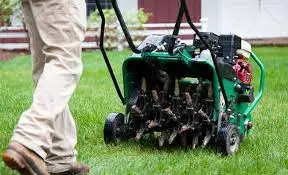
Professionals tend to recommend using core or plug aerators, although there are various types of aeration equipment that some consumers prefer. Spike and slicing aerators best describe these.
Cutting Aerators
Aerators that slice produce have blades that spin at high speeds. This equipment has blades that can chop through grass and thatch with ease. They burrow deep into the ground.
In a similar vein to the spike aerator, a slicing aerator doesn’t remove any dirt when used. However, they leave spaces that allow more oxygen, water, and nutrients to permeate the soil.
Aerators With Spikes
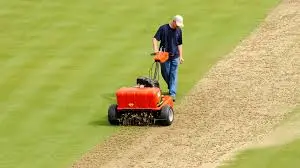
The most common sort of aerator, the spike aerator, can do more harm than good if employed over a broad enough grass area. Using a spike to make a hole in the ground is the only step in the spike aeration method. A sturdy, spike-shaped tine is employed.
One version of this that some homeowners use is a pair of sandals with spikes on the bottom to aerate their lawn and garden. Using spike aeration over a greater area exacerbates compaction issues, which is why it is not recommended. By simply squashing the soil down, the soil around the hole will become even more densely packed.
Is It Beneficial To Mow The Lawn After Aerating It?
Ideally, you’d wait two weeks, although some specialists recommend a week. The lawn should be around four to five inches tall, which is good. However, this is high enough to obscure any sprinkler heads you may have installed; marking their locations in advance can help you prevent accidentally harming them when mowing.
Wait until the new leaf blades have emerged at least an inch above the soil after overseeding your grass after aeration. If you mow before then, you risk smothering the recent growth in a layer of dead leaves and killing it from lack of sunlight. This is also the case when lawns go uncut for too long.
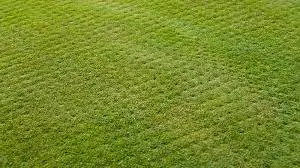
Common wisdom holds that mulch-mowing the core aeration plugs will speed up their decomposition; however, this is not the case. This is because the dirt may fall back on the aeration holes in the yard and fill them in if you mow these soil plugs with your mower. If the gaps left by aeration are filled in, the grass’s roots won’t get as much oxygen or water. Not what you want, as it will interfere with the aeration process.
Having aerated the soil, plugs should not be mowed. Allowing these plugs some time to decompose and release nutrients into the soil organically is the best course of action.
Soon after aeration, the lawn can be mowed also depending on the aerator model utilized. Lawns that have been aerated using either slicing or a spike aerator can be mowed immediately afterward. However, you shouldn’t cut the grass for at least a week after using a core aerator. To reiterate, mowing the lawn to the proper height before aerating is always recommended.
Some Useful Tips For Mowing And Aerating
Some things to remember when mowing and aerating your grass are listed below. Following these guidelines, you may get the most out of your aeration efforts:
- It is a must to mow the lawn before aerating it.
- If you haven’t mowed the lawn before aerating it, you should wait at least a week before doing so.
- Aeration will work properly when the soil is wet, so be sure to water the area first. It’s best to water the grass before aerating it or to wait until after a storm.
- Driveways and other high-traffic areas should be given special attention during the aeration process. The air quality in these regions might use some improvement.
- Don’t try to cut plugs with a lawnmower. Let the soil plugs decompose on the surface and return some of their nutrients to the ground.
- After aerating the lawn, you should overseed it or apply fertilizer.
Conclusion
This article concluded that mowing the lawn right after aeration is not recommended; instead, it is best to mow the lawn before aeration.
Mowing can reduce the effectiveness of aeration and render overseeding a futile endeavor. So the answer to the question “can I mow right after aerating” is “No”. You should wait at least a week before cutting after aerating your grass if you forgot to do so.
